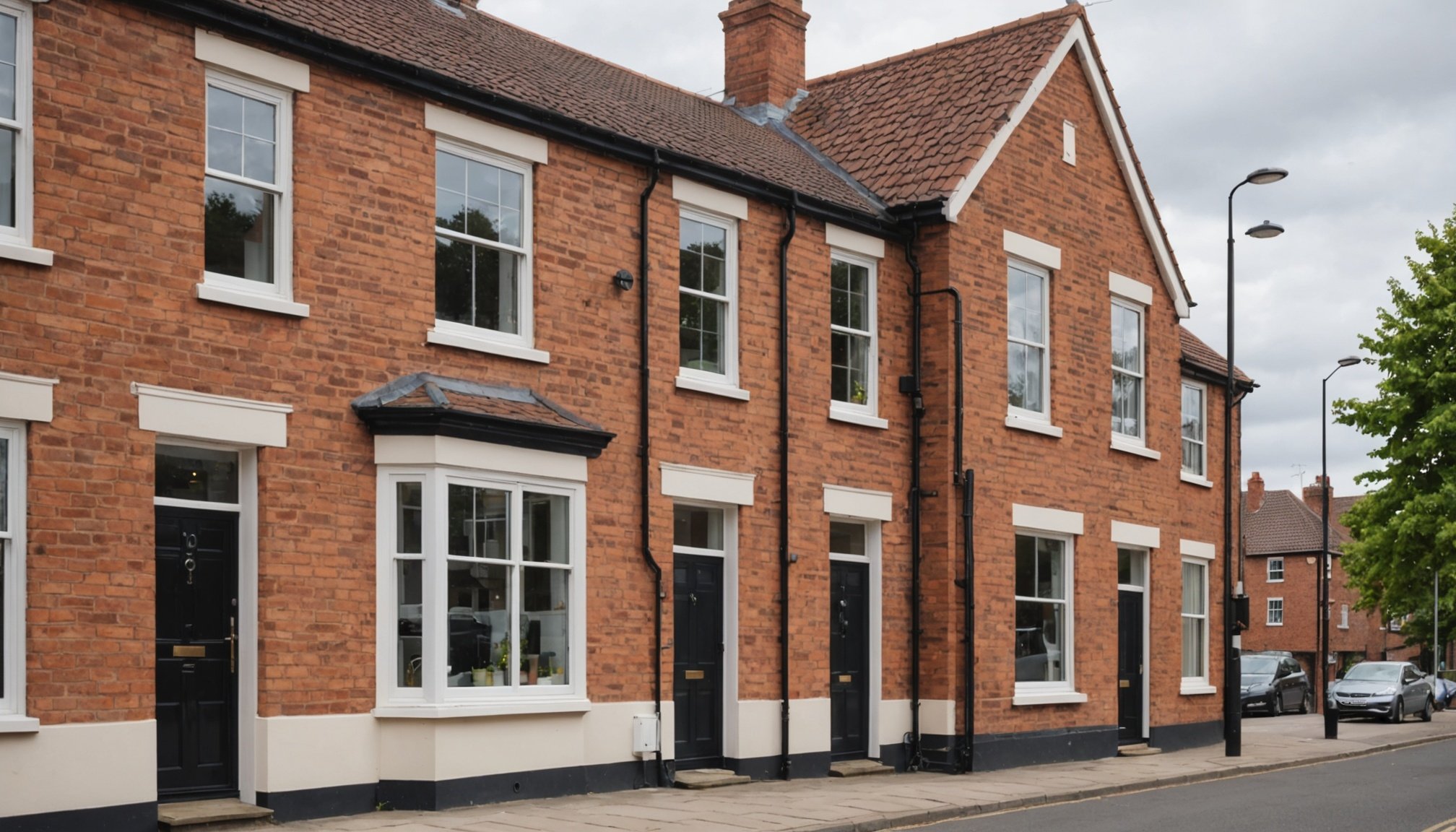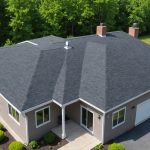Overview of Energy Efficiency in Retrofitting
Energy efficiency is paramount in home retrofitting, particularly within the UK housing market. Retrofitting homes with energy efficiency measures can significantly reduce energy consumption, which in turn lowers utility bills and carbon footprints.
In the current state, the UK housing stock is notably old with many homes built before modern energy efficiency standards were in place. This leads to higher energy consumption due to poor insulation and outdated heating systems. Addressing these inefficiencies through retrofitting not only improves energy efficiency but also enhances living conditions.
This might interest you : Unlocking Investment Success: Leveraging Demographic Data for Property Selection in UK Cities
The UK government has introduced a variety of incentives and regulations to encourage energy efficiency in retrofitting projects. Notable among these are grants and schemes aimed at subsidising costs for homeowners. Government incentives and regulations are structured to motivate both individuals and organizations to invest in energy-efficient solutions. These initiatives not only benefit homeowners but also contribute to national energy conservation goals.
In summary, achieving energy efficiency in home retrofitting is crucial for reducing overall energy use and meeting environmental standards. With the given state of the UK housing market, efforts in retrofitting are supported by robust governmental frameworks that aim to foster a sustainable future.
Topic to read : Unlocking Hidden Gems: A Guide to Buying Undervalued Real Estate in the UK Through Auctions
Insulation Improvements
Improving insulation in UK homes is a significant step towards enhancing thermal performance and driving substantial energy savings. Various types of insulation materials cater to different needs and structures prevalent in the UK. Common choices include fiberglass, cellulose, and foam insulation, each offering unique benefits and drawbacks. Fiberglass is popular due to its affordability and ease of installation, cellulose is favoured for its environmental benefits, and foam provides high thermal performance efficiency at a higher cost.
In retrofitting projects, best practices for installing insulation involve careful assessment of the current structure and potential areas for improvement. It is crucial to select the appropriate insulation material for different parts of the home, such as walls, roofs, and floors. Ensuring proper sealing and ventilation during installation can improve energy savings significantly.
Several case studies illustrate the potential of enhanced insulation to save energy. One example involves a family home in the Midlands where thermal performance was improved by upgrading its loft insulation, resulting in a 25% reduction in energy bills. Similar stories underscore the viable impact of strategic insulation improvements, encouraging homeowners to explore these solutions for better energy efficiency and cost savings.
Energy-Efficient Heating Systems
Transitioning to energy-efficient heating systems is more than an environmental priority; it’s increasingly essential under UK regulations.
Overview of Energy-Efficient Heating Options
To stay compliant and improve home efficiency, understanding heating systems is crucial. The market offers multiple energy-efficient solutions such as ground source heat pumps, which utilise subterranean heat, and condensing boilers, that minimize energy waste. Each option varies in efficiency and cost, influencing decisions based on individual and environmental priorities.
Comparing Conventional vs. Renewable Heating Solutions
In contrast to traditional gas heating systems, renewable options like heat pumps and biomass boilers stand out. These systems convert natural heat into usable energy, minimizing reliance on fossil fuels. The choice between them depends on geographical location, initial budget, and home setup.
Regulatory Considerations for Heating Systems
Adherence to UK regulations ensures these systems meet environmental and performance standards. Consider these factors:
- Performance metrics: Measure efficiency through Seasonal Coefficient of Performance (SCOP) for heat pumps, and Energy-related Products (ErP) ratings for boilers.
- Implementation impacts on property value and compliance.
- Annual evaluations to verify ongoing regulation compliance.
Navigating the path to energy efficiency demands awareness of available solutions, understanding their benefits, and ensuring conformity with regulations.
Incorporating Renewable Energy Options
Integrating renewable energy sources, such as solar panels, into retrofitting projects can greatly enhance energy efficiency. Solar panels are known for converting sunlight into electricity, reducing dependence on non-renewable sources and cutting energy costs over time. This makes them an attractive option for homeowners aiming to improve their energy footprint and achieve long-term cost savings.
Wind turbines also play a critical role in residential energy efficiency. These turbines capture wind energy and transform it into electrical power, providing a clean and sustainable energy solution. Installing small-scale turbines can significantly reduce electricity bills and environmental impact, particularly in areas with strong wind resources.
Moreover, there are numerous financial incentives available to support the adoption of renewable energy systems. Governments often offer tax credits, rebates, and grants to reduce installation costs, making the transition to clean energy more feasible for homeowners. These incentives can vary by region, but they generally aim to encourage the uptake of renewable technologies.
By harnessing solar and wind energy sources, homeowners can enjoy both environmental benefits and financial savings, promoting a more sustainable future. The combination of modern technology and government support makes it easier than ever to embrace renewable energy solutions.
Smart Home Technology for Energy Efficiency
Enhancing energy efficiency in homes has become increasingly feasible with advancements in smart home technology. Among various systems, energy management solutions play a crucial role in automating consumption and reducing overall costs.
Types of Smart Home Devices
Several devices contribute to energy efficiency, including smart thermostats, which adjust temperatures based on occupancy, and smart lighting systems that automatically switch off when not in use. Such automation significantly curtails unnecessary energy use, translating to lower utility bills.
Impact of Energy Management Systems
Energy management systems collect and analyse data, enabling homeowners to understand their consumption patterns. By providing insights into peak usage times, these systems help in adjusting habits and schedules, thus fostering efficient energy usage.
Automation via these systems ensures that devices operate only when needed, optimizing energy use even further.
Future Trends
The future of smart home technology includes retrofitting older homes with energy-efficient features. Innovations such as smart grids and interconnected appliances are expected to become standard, allowing for seamless integration into existing systems. This forward-thinking approach not only enhances energy management but also boosts the overall sustainability of household operations.
Cost Considerations and Financial Incentives
Exploring cost savings and financial opportunities is crucial for anyone considering energy efficiency upgrades. The initial costs of energy-efficient retrofitting can be significant, ranging from simple changes, like adding insulation, to more comprehensive undertakings, such as installing renewable energy systems. However, these upfront expenses can be mitigated through thoughtful financial planning.
Financing options are widely available to ease the burden of initial investment. Homeowners can explore loans specifically designed for energy improvements, often offered at lower interest rates. Some financial institutions even provide tailored packages that align with anticipated energy savings, creating a synergy between cost savings and affordability. Such models help ensure that the investment is economically viable over time.
Moreover, the UK government offers numerous programs and grants designed to encourage energy efficiency. These can significantly reduce the net cost of retrofitting projects. For instance, specific grants may be provided for the installation of solar panels or home insulation upgrades, depending on location and eligibility. It’s wise for homeowners to investigate these options thoroughly, as they can offer substantial cost savings in the long term, enhancing the overall financial feasibility of energy efficiency initiatives. Understanding and utilising these financial incentives is key to making informed decisions.
Case Studies and Success Stories
Exploring real-life case studies of homes successfully retrofitted for energy efficiency unveils a wealth of best practices and inspiring success stories. These examples showcase the potential of energy efficiency projects while providing insightful lessons learned.
In the UK, several properties have undergone impressive transformations. For instance, a Victorian home in London was retrofitted with insulated plasterboard and triple-glazed windows. This combination dramatically reduced heat loss and subsequently lowered energy bills. By adopting such innovative best practices, homeowners can significantly enhance their properties’ sustainability.
Success stories also highlight the importance of tailored solutions. For example, a semi-detached house in Manchester incorporated a combination of roof insulation, solar panels, and underfloor heating. This bespoke approach not only improved energy efficiency but also boosted the property’s value.
Lessons learned emphasize the necessity of thorough planning and evaluation before executing retrofitting projects. Engaging with experienced professionals ensures the selection of appropriate materials and methods. Moreover, securing government grants can make these investments more accessible, demonstrating how financially feasible retrofitting can be.
These compelling case studies provide a blueprint for future successful applications, ultimately encouraging homeowners to embrace energy-efficient retrofitting. Through these success stories, readers gain a deeper understanding of the practical benefits within the UK context.











